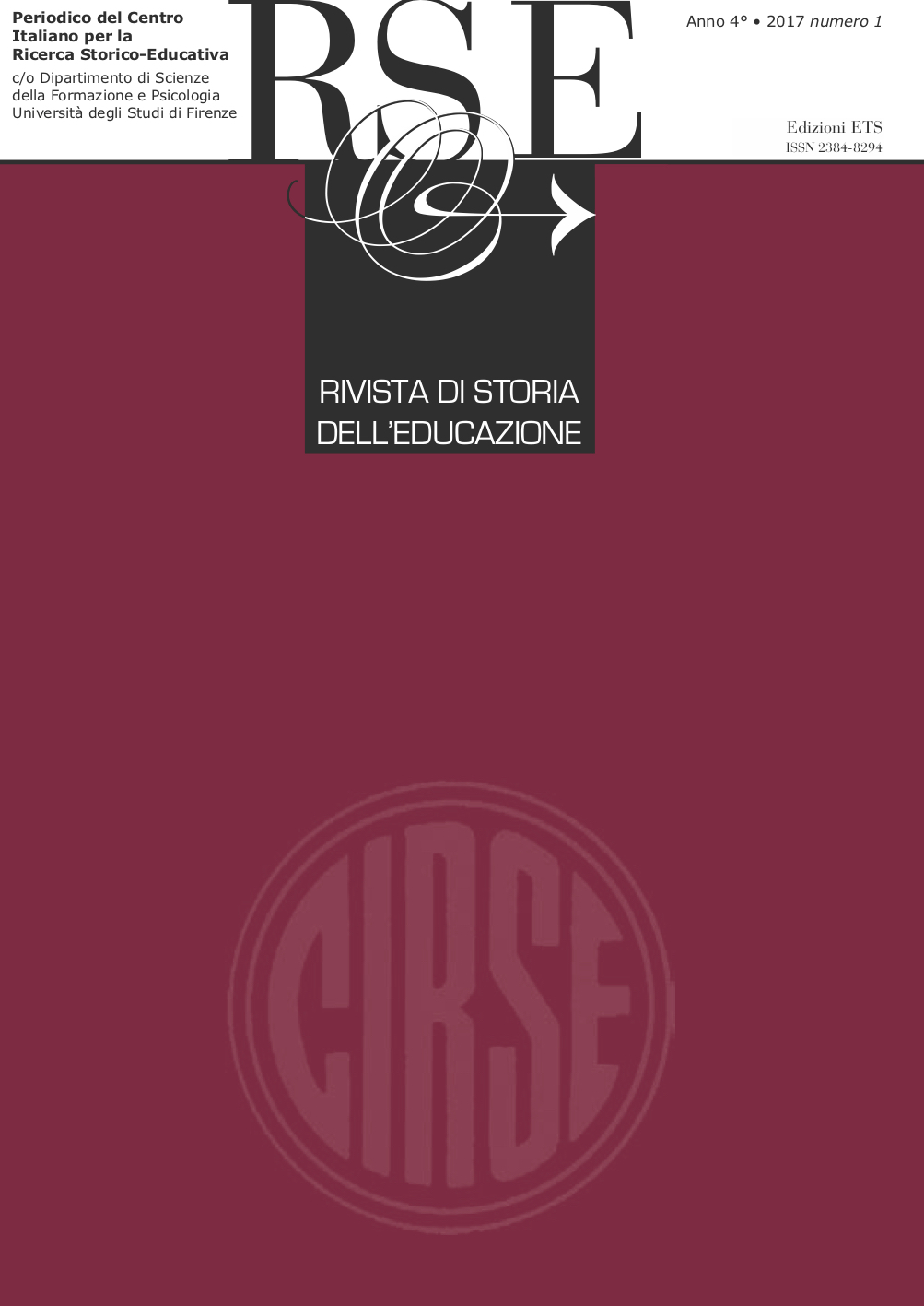Articles
Addressees as protagonists of reading book stories: children and their portrayal – a comparison of an Italian storybook for Italian – language schoolchildren during the Imperial and Royal Habsburg era and a German storybook for German-language schoolchild
Published 2018-12-03
Keywords
- Schoolbook analysis; image of the child; nationalism and childhood; instrumentalization of the school
How to Cite
Augschöll Blasbichler, A. (2018). Addressees as protagonists of reading book stories: children and their portrayal – a comparison of an Italian storybook for Italian – language schoolchildren during the Imperial and Royal Habsburg era and a German storybook for German-language schoolchild. Rivista Di Storia dell’Educazione, 5(2), 157–183. Retrieved from https://rivistadistoriadelleducazione.it/index.php/rse/article/view/7899
Abstract
Schoolbooks are written for children. The stories and narratives they contain are a self-representation of society and its values and visions. This paper analyzes the texts in two textbooks written for children of a minority language in Trentino and in South Tyrol in the historical context of nationalist settings in the early 20th century. The focus of interest lies in the representation of child protagonists in the stories and narratives.

